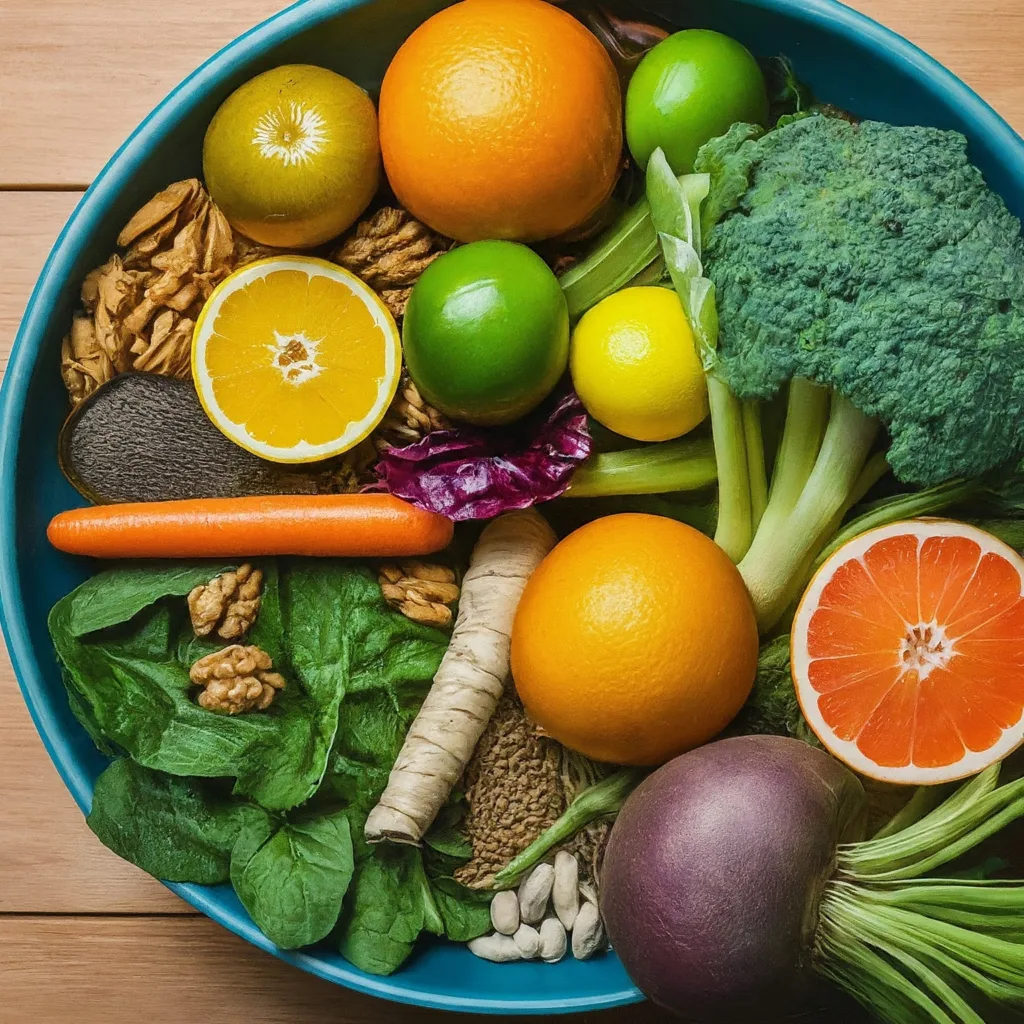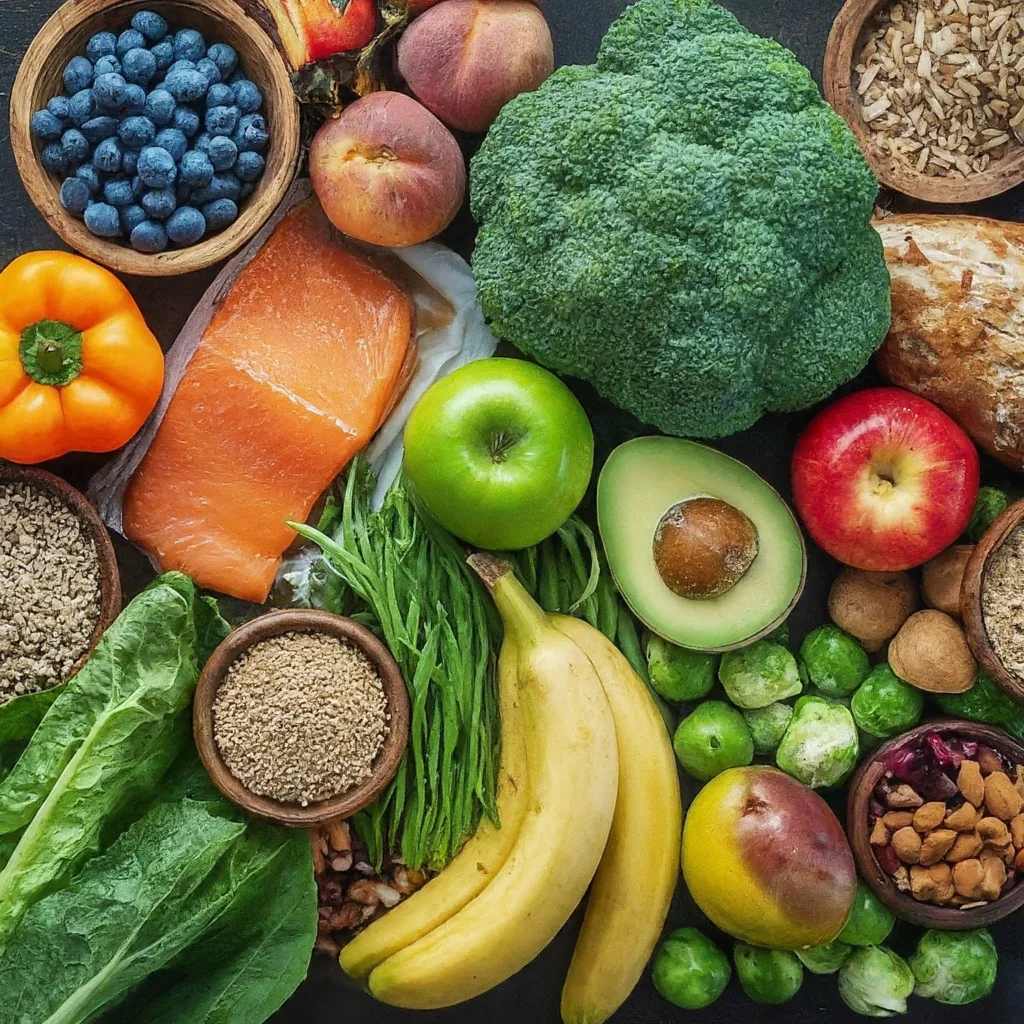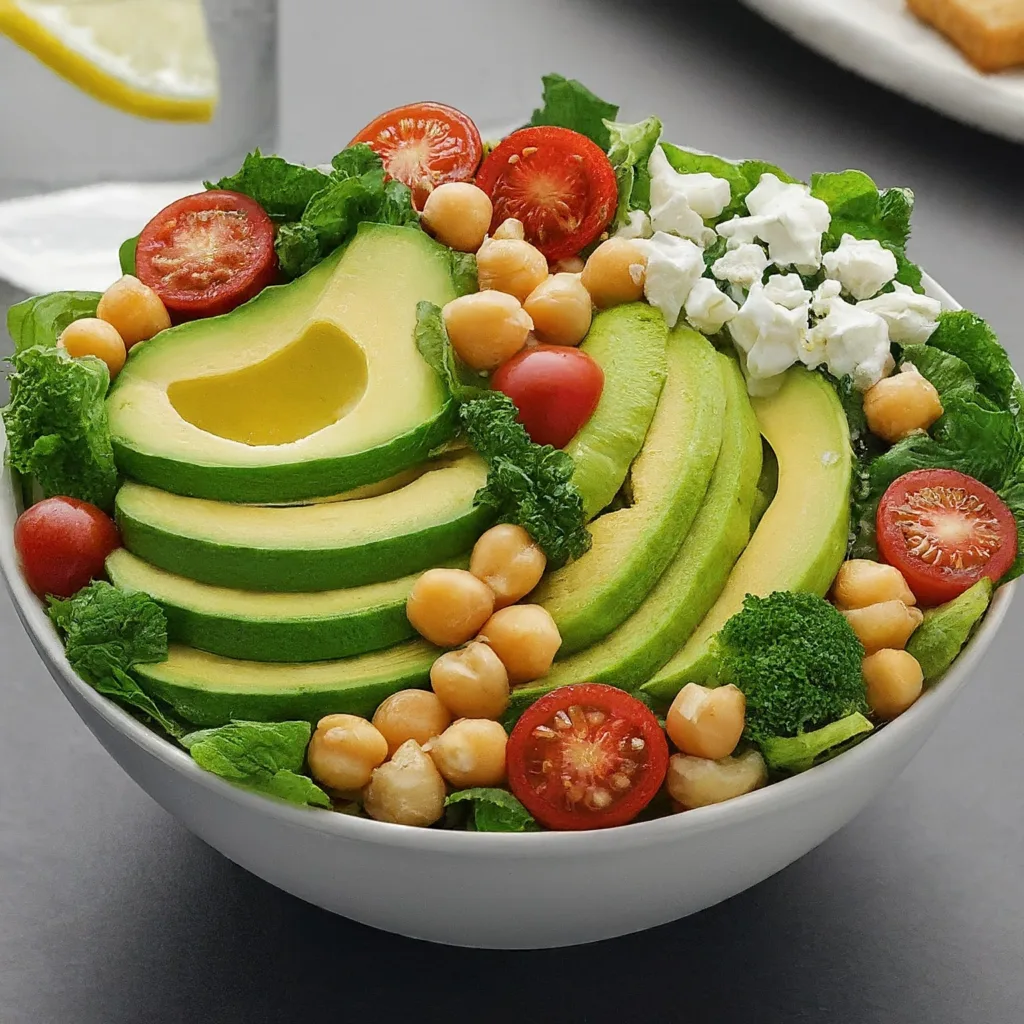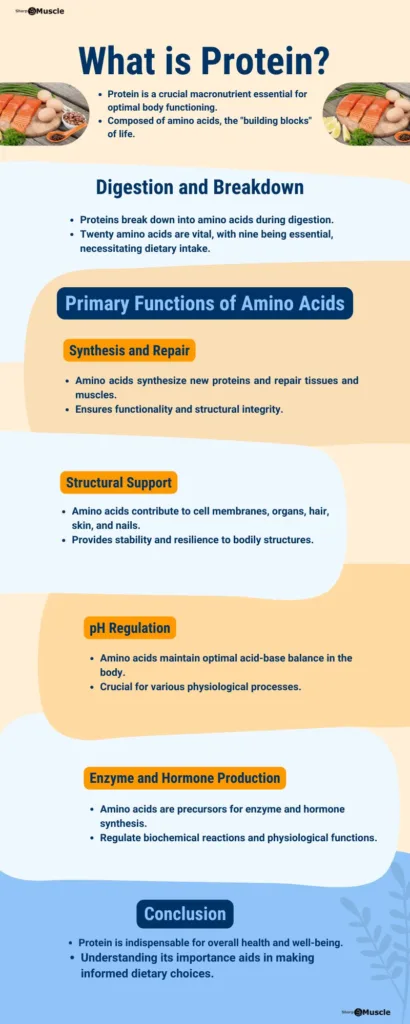Macronutrients—carb, fat and protein—are essential nutrients that supply energy and are required by the body in relatively large amounts.
Aside from the water content, most of the things you consume are made up of macronutrients: substances that humans need in relatively large amounts for energy.
I’m tempted to say that macronutrients are the nutrients you can see as opposed to micronutrients like vitamins or minerals, as the plate that holds an ice cream scoop of white mashed potatoes next to a slice of salmon , clearly indicating the carbs seating next to a protein. Although both foods may contain a smidgen of them or other macronutrients—salmon, for example, is about 40% fat.
What do we mean by “large quantity”? That would be about 300-600 grams of carbs, fat, and protein, which amounts to 2,000-3,000 calories per day. And a lot for lumberjacks and mountain guides who eat 7,000 calories per day.
You need to consume macronutrient to convert your internal energy into your own fuel as well as for the growth, replacement, and maintenance of your bodily tissues.
You can include water or fiber in the macronutrient category, but we’ll focus on the top three. I’m sure you’ve come across protein, fat, and carbs before, even as these terms take on new meanings, driven by hypermarketing and branding of new diet regimes like “high protein” or “very low carb.”
They tend to become scientific rather than political football, as experts vie with one another to emphasize their health on one or the other macronutrients.
Understanding Macronutrients
Macronutrients include carbohydrates, fats, and proteins and are essential nutrients. In terms of fitness, by eating, you are basically rebuilding yourself, and your fitness level starts with nutrition.
Of the three primary macronutrients – carbohydrates, fats and proteins – that make up our diet, protein is the most important and versatile and fat are also functional building blocks and have a diverse range of uses in the body. Including growth and repair, as well as precursors to hormones and components of the immune system.
While alcohol can be considered a macronutrient because it provides energy, it is in a unique category; It is not needed by the body itself, and also has toxic properties, and is therefore not considered essential.
Interestingly, all of these macronutrients are made up of the same elements:
- Carbon (C)
- Oxygen (O)
- Nitrogen (N)
- Hydrogen (H)
This article will outline their chemical and biological properties, the importance of each in the diet, counting macronutrients, and recommended intakes for good health.
Protein
Proteins are essential nutrients, providing 4 calories/g (17 kJ/g) of energy, and are made up of single units called amino acids.
Amino acids are the building blocks of the human body and are used to synthesize cells, muscles, organs, hormones and immune factors, as well as act as buffers to control the acidity or basicity of the body.
Proteins are made up of amino acid chains, which are linked by peptide bonds (chemical bonds between amino acids).
Proteins differ according to the number and sequence of amino acids, the way proteins fold and interact with other chemical groups in proteins to induce chemical changes. All of this leads to unique, individual proteins, which play a variety of roles in the body.
Calculating Energy from Macronutrient in Food:
To calculate the energy contained in foods, you must multiply the total amount of each macronutrient contained in the food (in grams) by the Atwater factors for protein, fat, and carb.
Atwater factors provide the available energy for each types of macronutrients, regardless of the source of food they are obtained from.
Atwater factors:
| Macronutrient | Calories/g | Kilojoules/g |
|---|---|---|
| Protein | 4 cal/g | 17 kJ/g |
| Carbs | 4 cal/g | 17 kJ/g |
| Fat | 9 cal/g | 36 kJ/g |
For example, a food label may indicate:
| Macronutrient | In gram |
|---|---|
| Protein | 9.6 |
| Carbohydrate | 43 |
| Fat | 3.2 |
In this case, the energy in calories/kilojoules that is provided by each nutrient:
| Macronutrient | Calories/g | Kilojoules/g |
|---|---|---|
| Protein | 9.6 × 4 = 38.4 cal | 9.6 × 17 = 163.2 kJ |
| Carbohydrate | 43 × 4 = 172 cal | 43 × 17 = 743 kJ |
| Fat | 3.2 × 9 = 28.8 cal | 3.2 × 37 = 118.4 kJ |
| Total energy | 239.2 cal | 1012.6 kJ |
All amino acids have the same basic chemical structure: a central carbon to which a hydrogen group (H) is attached, an amino group (NH2), a carboxylic acid group (COOH), and a side chain group. It is the side chain groups that make each amino acid different.
There are 20 different amino acids; Nine are essential and the remaining 11 are non-essential.
Essential amino acids
There are nine essential amino acids that the human body needs but is unable to synthesize (combine elements to form a substance), and therefore must be obtained from nutrients. As such, they are said to be essential (or indispensable). These are:
- histidine
- isoleucine
- leucine
- lysine
- methionine
- phenylalanine
- threonine
- tryptophan
- valine
A deficiency of essential amino acids in the protein pool in the body will begin to limit the production of proteins required for growth, repair, cell function and development.
Non-essential amino acids
There are 11 non-essential (or dispensable) amino acids that the body is able to synthesize, but that can also be provided by the diet.
In some situations, a nonessential amino acid may be essential; In such cases, the amino acid is said to be conditionally essential (or conditionally essential). Tyrosine is a conditionally essential amino acid, because the body uses tryptophan to make tyrosine: if tryptophan is limited, it is unable to synthesize tyrosine.
Protein foods are often classified in terms of their quality, both in terms of the mix and quantity of amino acids they contain.
Complete protein sources usually refer to animal derived proteins that contain all the essential amino acids in the required proportions. Plant proteins are said to be incomplete because they do not contain one or more essential amino acids, or the levels of essential amino acids are too low to meet requirements.
Complementary protein refers to the combination of two plant proteins to provide all essential amino acids—for example, combining beans (deficient in methionine) with cereals (deficient in lysine and threonine).
Roles and health effect of protein in the body
Roles
Proteins have wide and varied roles in the human body: they are involved in the development, repair, and replacement of all cells (including the blood, muscles, skeletal system, tissues, and organs), and in regulating homeostatic control and defense of the body.
One of the main functional roles of proteins in the body is as enzymes, which speed up chemical reactions in the body.
Enzymes are synthesized from amino acids as well as from other dietary components (for example, zinc and selenium). They are used by every organ and cell in the body to aid in repair and growth.
Enzymes also contribute to the body’s homeostatic control, immune function, fluid balance regulation, transport of nutrients and other molecules, and synthesis of proteins involved in detoxification of the body.
In addition to the important role of protein in growth and regulation of the body, protein can also be used as a source of energy if carbohydrate and fat intake is low (for example, in times of starvation). Dietary intake of protein is also limited, if necessary, so muscle will be broken down to provide more energy.
Protein can also be metabolized for energy when performing long-term energy demands, such as in ultra-endurance events lasting 3–4 hours or longer.
The National Health and Medical Research Council (NHMRC) has analyzed and synthesized data from many thousands of peer reviewed journal articles (the evidence base) to prepare Nutrient Reference Values (NRVs) (NHMRC et al. 2006). NRVs are a set of recommended intakes for the macro and micronutrients that best support healthy Australians to maintain good health.
The needs are expressed in the following categories:
Estimated Average Requirements (EAR)
This is a daily nutrient level estimated from the evidence base to meet the needs of half of healthy individuals in a particular life stage and gender group.
Recommended Dietary Intake (RDI)
The average daily dietary intake level that is sufficient to meet the nutrient requirements of nearly all (97–98%) healthy individuals in a particular life stage and gender group. This is the recommended level of intake for individuals.
Acceptable Intake (AI)
For some nutrients, there is an insufficient evidence base to provide an EAR or RDI. In such cases, AI is recommended.
It is defined as the level of average daily nutrient intake – based on observational or experimentally determined estimates or estimates of nutrient intake of a group (or groups) of apparently healthy people – that is considered adequate. is believed.
Estimated Energy Requirements (EER)
Average dietary energy intake estimated to maintain energy balance consistent with good health in a healthy adult of defined age, sex, weight, height and level of physical activity.
In children and pregnant and lactating women, the EER is taken to account for the needs associated with growth or milk secretion at rates consistent with good health.
Upper intake level (UL)
The highest average daily nutrient intake level is not likely to cause any adverse health effects for nearly all individuals in the general population. As intake increases above the UL, the potential risk of adverse effects increases.1
Acceptable Macronutrient Distribution Range (AMDR)
Recommended ranges of macronutrient contributions to total daily energy intake to reduce chronic disease risk while ensuring adequate micronutrient status:
- Protein = 15-25%
- Fat = 20–35%
- Carbohydrates = 45–65%
NRV is expressed in different formats which reflect the intake
Recommended for individuals and groups, level of evidence A
nutrient and, where relevant, the highest possible safe intake of the nutrient.
It is important to realize that, like other biological characteristics of a human being such as height or eye color, each person is unique and will have different nutrient requirements, and NRVs take this into account.
For example, the RDI for vitamin C is 45 mg/day for men and women over the age of 19, but not everyone will need that amount. In fact, the needs of 97.98% of the healthy population would be met at this intake level, meaning that only 2.02% of the population would need more than this. The EAR for vitamin C is 30 mg/day, which indicates that half the population would need only this amount.
Recommended Intake for Non-Athletes
Protein is constantly broken down and re-synthesized in the body. This process is known as protein turnover, in which small amounts of protein are lost in the stool.
Requirements may vary for athletes, depending on their age and sport played. Protein is needed on a daily basis in the diet because of the ubiquitous role of proteins and their limited storage in the body. It is recommended that protein intake provides approximately 10-15% of the daily energy requirement.
For the average adult who requires about 8700 kJ per day, this equates to about 50–75 grams of protein per day.
NRV recommendations for protein are based on grams/kg of body weight for each gender and age group.
The daily RDI is 0.75 g/kg of body weight for women aged 19-70, and 0.94 g/kg of body weight for women over the age of 70.
The RDI is 0.84 g/kg of body weight for men aged 19-70, and 1.07 g/kg of body weight for men over the age of 70.
Health effect of protein
Protein is important for the maintenance and health of our bodies. However, the health problems associated with protein deficiency are devastating in developing countries, and it is a leading cause of death among children in these places.
In most cases, protein deficiency occurs in combination with energy deficiency, and is referred to as protein-energy malnutrition (PEM).
Primary PEM occurs as a direct result of diets that are deficient in both protein and energy.
Secondary PEM arises as a complication of chronic disease, such as acquired immune deficiency syndrome (AIDS), tuberculosis and cancer, due to increased nutritional requirements, limited oral intake or malabsorption of nutrients.
Acute PEM refers to a short period of food deprivation, as is the case with children who are often of appropriate height for age but underweight.
Chronic PEM refers to prolonged food deprivation that affects growth and weight, and is characteristic of small-for-age children. PEM presents clinically in two distinct forms: Kwashiorkor and Marasmus.
Kwashiorkor usually represents a sudden and recent deprivation of food (protein and energy). In Ghana, the term refers to the disease that an older child develops when the next child is born, resulting in the removal of the breast.
Clinically, Kwashiorkor has a rapid onset due to weight loss and some muscle wasting due to insufficient protein intake or subsequent disease.
The characteristic clinical feature is edema (swelling in the body as fluid leaks out of capillaries), which is evidenced by a child’s swollen abdomen, enlarged fatty liver, dry brittle hair, and the development of skin lesions.
Apathy, sadness, irritability, and sadness are also evident with loss of appetite.
Marasmus occurs with severe deprivation of food (both in protein, energy, and nutrients) for an extended period; Malnutrition develops slowly and children usually appear small for their age.
Unlike Kwashiorkor, there is no edema, no enlarged fatty liver and the skin is dry and wrinkles easily.
In developed regions, chronic disease or poverty are more likely to cause protein deficiency and as such, it is unlikely that an athlete will have a high protein intake – unless it reflects a philosophical or religious reason. That limits their intake of animal products.
Fat
Fats (or lipids) are a large and diverse group of molecules found naturally in both the diet and the human body. They include fats, waxes, sterols, fat-soluble vitamins, monoglycerides, diglycerides, triglycerides, phospholipids, and esters.
Dietary fats provide a concentrated form of energy (37 kJ/g) and are essential in the diet to supply fat-soluble vitamins (vitamins A, D, E and K) and essential fatty acids (alpha-linolenic acid and linoleic acid).
Importantly, and often less considered, dietary fat provides important organoleptic (taste and texture) properties to food that contains fat and food to which fat is added.
Lipids play essential roles in the body, including energy storage, cell signaling, and being key structural components of cell membranes.
While consumption of some dietary fat (saturated and trans fat) has been linked to the development of chronic disease, dietary fat is an essential part of the diet, providing essential fatty acids, vitamins and other phytonutrients.
Fatty acids
Fatty acids are made up of a chain of carbon (C) atoms, linked by a single bond. Up to four hydrogen (H) atoms can be attached to each C atom. There is a carboxyl group at one end of the carbon chain and a methyl group at the other end.
Fatty acids can be classified according to the number of C atoms in the chain. Short-chain fatty acids contain 2–6 C atoms, medium chain fatty acids 6–12 C atoms, long-chain 14–20 C atoms, and finally, long-chain fatty acids with more than 20 C atoms.
Fatty acids, however, are more often classified according to the number of double bonds present between the C atoms – the more double bonds in the chain, the more unsaturated the fatty acid.
Saturated fatty acids
Fatty acid chains that do not contain any double bonds between C atoms are called saturated fatty acids.
They are found mostly in animal food products such as meat, cheese and butter, but are also present in some plant products such as coconut and palm oil.
Saturated fats are associated with an increased risk of heart disease; However, emerging research is beginning to show that their effect may not be as great as once thought.
Research and scientific debate in this area is still ongoing and as new high-quality evidence emerges, it may lead to changes in dietary advice.
Monounsaturated fatty acids
Monounsaturated fatty acids have a double bond in the C chain and are found in foods such as olives and olive oil, avocados, and some types of nuts.
Monounsaturated fat (from olive oil) is one of the main components of the Mediterranean diet, which has been shown in both epidemiological studies and intervention studies to reduce the risk and provide benefits in cardiovascular disease.
It is important to note that other components of the Mediterranean diet (vegetables, fruits, and grains) also play a role in good health.
Polyunsaturated fatty acids (PUFAs)
PUFAs contain two or more double bonds in the C chain.
PUFAs are further subdivided according to the position of the first double bond in the chain. When there is a double bond at the third C atom from the methyl end, they are called n-3 (or omega-3) fatty acids. If the first double bond is at the sixth C atom from the methyl end, they are called n-6 (or omega-6) fatty acids.
The n-3 and n-6 basic fatty acids are alphalinolenic and linoleic acid essential fatty acids, respectively. They are known as essential, because the human body is unable to synthesize them, and as such, must be obtained from the diet.
n-6 polyunsaturated fatty acids
Linoleic acid (LA) is the basic fatty acid of the n-6 PUFA and, as required, needs to be obtained from the diet.
LA is found as a concentrated source in vegetable oils such as safflower oil, sunflower oils, nuts, seeds, and in salad dressings made from these.
LA is important because it can be metabolized through a series of reactions to form the long-chain fatty acid, arachidonic acid (AA).
AA can also be found in the diet (in meat) and is the direct precursor to a diverse group of hormone-like substances known as eicosanoids, which play an essential role in the inflammatory process and thrombosis (clot formation).
n-3 polyunsaturated fatty acids
Alpha-linolenic acid (ALA) is the basic fatty acid of the n-3 PUFA, and like LA, it needs to be obtained from the diet.
ALA is found in concentrated sources in flaxseed (linseed) oil and in smaller amounts in canola oil, walnuts, chia seeds and green leafy vegetables also contain ALA.
ALA is metabolized through the same chain of reactions that converts LA to AA, forming the long-chain fatty acids, eicosapentaenoic acid (EPA) and docosahexaenoic acid (DHA).
EPA and DHA are found in breast milk, fish, and fish oil. Like AA, EPA is important because it is a direct precursor to a diverse group of hormone-like substances called eicosanoids; However, eicosanoids derived from EPA are anti-inflammatory and anti-thrombotic compared to those derived from AA.
This biochemical difference between the two classes of fatty acids and their eicosanoids has been used therapeutically in the management of inflammatory diseases such as rheumatoid arthritis and psoriasis.
DHA is found in concentrated amounts in the cellular phospholipids of the brain and nervous tissue of humans and, as such, has an essential role in embryonic and early life nutrition.
Trans fatty acids
Trans fatty acids (TFAs) are a chemical variation of unsaturated fat. In the cis form (regular form) the C atom and the H atom with the double bond are on the same side. In the trans form, the H-atoms are on the opposite side of the double-bond C atoms, so they look and act more like saturated fats.
TFAs occur naturally in dairy products and beef. In the food industry, manufacturers can produce TFAs by combining H atoms with unsaturated fatty acids using a mixture of heat and pressure.
This results in the conversion of liquid oils into a solid state, making them very useful for the production of certain foods, such as vegetable shortening for spreads and baking. However, these TFAs have been shown to be worse for heart disease than an equivalent amount of saturated fat.
The WHO recommends that no more than one percent of our dietary energy should be derived from TFAs.
Triglycerides
Triglycerides are the main components of body fat (adipose tissue) in animals, including humans. They are composed of a glycerol backbone to which three fatty acids are attached.
All triglycerides are composed of a variety of fatty acids, from short-chain to long-chain. Triglycerides are also the main type of fat we consume in our diets, from both vegetable and animal sources.
Recommendations for the intake of the essential fatty acids
There is no defined RDI, EAR, or AI for total fat intake in the NMHRC’s Nutrient Reference Values. However, there are recommendations for the intake of essential fatty acids.
In the latest edition of the Australian Guide to Healthy Eating, which provides qualitative guidelines on healthy eating, the recommendation is now to ‘avoid saturated fat’, changing from the previous recommendation to ‘reduce total fat’.
The NRV to AMDR suggests that fat should contribute 20–35% of your total energy intake.
| Fatty acid | Men (19+ years) | Women (19+ years) |
|---|---|---|
| LA | 13 g/day | 8 g/day |
| ALA | 1.3 g/day | 0.8 g/day |
| Total LC n-3 (DHA + EPA + DHA) | 160 mg/day | 90 mg/day |
Highlights done by reducing the intake of foods high in saturated fat in our diet and replacing them with monounsaturated oils and foods (olive, canola oil, avocado, almonds) or polyunsaturated oils and foods (nuts, fish, polyunsaturated vegetable oils) goes.
Carbs
Carbohydrates, like fats and proteins, are molecules made of C, H and O (oxygen) atoms.
They are ubiquitous in the diet – present in breads, cereals, grains, legumes, rice, pasta, vegetables and fruits, although dairy is the only animal source of carbs.
Carbs provide the major source of fuel (energy) for the muscles and body, providing 17 kJ/g.
Glucose, which is a monosaccharide (simple) sugar, is the sole source of energy for red blood cells and provides a significant portion of the energy needed by the brain. Excess glucose in the blood is converted to the storage form of glucose, glycogen.
The average person stores about 5000 kilojoules worth of glucose in the form of glycogen, which can be easily converted back to glucose again when blood glucose levels begin to drop.
Carbohydrates have many biological functions in the body.
Apart from their important role in providing energy, they also have a structural role. Ribose, which is a component of coenzymes and the backbone of RNA, is a five-C nuclear monosaccharide, and the closely related deoxyribose is a component of DNA.
Carbohydrates also play an essential role in the immune system and blood clotting.
Chemical forms of carbs
There are different types of carbs in the diet. They include simple carbohydrates (sugars) and complex carbohydrates (starch and fiber).
Regardless of the length or complexity of carbohydrates, they are all made up of sugar units.
Monosaccharides
Monosaccharides are made up of a single unit of sugar and are the most basic units of carbohydrates.
There are three monosaccharides or ‘sugars’:
- Glucose
- Fructose
- Galactose
All monosaccharides have the same number of C, H and O atoms but differ in their chemical structure.
Monosaccharides are the building blocks of disaccharides and polysaccharides.
Glucose
Glucose (C6H12O6) serves as an essential energy source for our bodies; When people talk about blood sugar levels, they are referring to the glucose in the blood.
Most of the polysaccharides in our diet are made up of chains of glucose, with starch being the most common polysaccharide.
Fructose
Due to the slightly different chemical structure of fructose, it is the sweetest tasting monosaccharide.
Fructose occurs naturally in some fruits and honey. It can be added to some foods, such as soft drinks, ready-to-eat breakfast cereals and desserts, and biscuit and cake mixes, through the use of high fructose corn syrup.
Galactose
Galactose is found in dairy products and sugar beets, and is the least sweet-tasting monosaccharide.
Disaccharide
Disaccharides are composed of two glucose units and can be formed as a pair of the three monosaccharides.
There are three disaccharides, and each contains glucose as one of the monosaccharide components.
Sucrose, which is the common table sugar refined from cane sugar, is made up of glucose and fructose. Lactose is found in milk and is made up of galactose and glucose.
Maltose, also known as malt sugar, is a disaccharide that is produced when amylase, an enzyme, breaks down starch.
Lactose intolerance is quite common, with only 30% of adults worldwide able to digest lactose. Intestinal cells produce an enzyme called lactase, which breaks down lactose into galactose and glucose.
When people have low lactase activity, lactose remains undigested in the intestinal tract and leads to a high concentration of the material in the intestine, which draws fluid into the intestinal lumen and allows for the proliferation of lactose-digesting bacteria. Occurs in combination with, leads to painful bloating, wind and diarrhea.
Artificial sweeteners
Artificial sweeteners are chemicals, either naturally occurring (stevia) or industrially synthesized (aspartame, saccharin), or sugar alcohols, that have a sweet taste with either no kilojoules or fewer kilojoules than sugar.
This allows the food industry to replace sugar with artificial sweeteners without adding kilojoules to the product. It was assumed that a reduction in kilojoule consumption would lead to significant weight loss in the community, but research shows a lack of predictive effect.
Whether this is due to artificial sweeteners increasing people’s consumption of other foods or affecting metabolism in other ways is still debated among researchers.
Complex carbs
Complex carbs include oligosaccharides, which contain between 3 and 9 monosaccharide units, and polysaccharides, which contain 10 or more monosaccharide units.
Oligosaccharides
Oligosaccharides are found in a variety of foods. Starch, which is found in a wide variety of foods such as wheat, maize potatoes and rice, consists of the α-glucan oligosaccharide maltodextrin.
Maltodextrin is used in the food industry as a sweetener, a fat substitute, and to modify the texture of food through its thickening properties.
Oligosaccharides that are not α-glucans include raffinose, stachyose, verbascose, inulin and fructans, and are found in legumes, artichokes, wheat and rye, and in the onion, leek and garlic family.
Fructans (including inulin) have unique properties in the gastrointestinal system and are known as prebiotics.
Prebiotics remain undigested in the gastrointestinal system and promote the growth of selective bacteria that improve human health.
Consumption of these foods leads to a change in the gut flora, with a dominance of Bifidobacteria and Lactobacillus and the production of short-chain fatty acids (SCFAs).
SCFAs, also known as volatile fatty acids (VFAs), are important for colonic health because they are the primary energy source for colon cells and have anti-carcinogenic and anti-inflammatory properties.
Polysaccharide
Glycogen
Glycogen is found in limited amounts in food, with a smaller amount found in meat. However, it is its role in the body that is of critical importance and interest to nutritionists, including sports nutritionists.
Glycogen is a secondary form of energy storage (5000 kJ in the average person). When blood glucose levels rise after a meal, insulin is released, which stimulates the uptake of glucose into cells and storage as glycogen.
Conversely, when blood glucose levels drop due to a lack of dietary carbohydrate intake or a decrease in blood glucose levels from exercise, the pancreas releases glucagon. Which stimulates the liver and muscles to release and break down glycogen and release glucose (called glycogenolysis).
Glucose can also be obtained through gluconeogenesis, which is a metabolic pathway that forms glucose from substrates such as lactate, glycerol, and glucogenic amino acids.
Glycogen is a highly branched structure, consisting of 30,000 glucose units surrounding a protein core.
Glycogen is stored in muscle, liver and fat cells in a hydrated form with three or four parts of water per part of glycogen.
This explains the dramatic weight loss seen with low-carbohydrate diets. In this scenario, as blood sugar levels decrease, glycogen is converted back to glucose to supply fuel to the brain and muscles, which also releases water, therefore contributing to weight loss.
Starch
Starch is the form in which plants store glucose to use for energy, some common starches include amylose and amylopectin. They both contain hundreds to thousands of glucose units linked together, as is the case with glycogen.
Starch is found in many foods, including wheat, rice, lentils, corn, beans, and root vegetables. Starch makes up the most common carbohydrate in our diet.
Resistant starch is a type of starch that resists digestion in the small intestine and is fermented into short-chain fatty acids by bacteria in the large intestine.
These SCFAs are important because they protect the gut from cancer and are also absorbed into the bloodstream and may be involved in lowering blood cholesterol. Resistant starch is found in raw bananas, potatoes, and lentils.
Fiber
While there are many definitions of fiber, at its simplest, dietary fiber is a carbohydrate that is not digested by our bodies.
Fiber is the part of the edible parts of plants that is not digested or absorbed in the small intestine, that is partially or completely fermented in the large intestine, and that promotes beneficial physiological effects.
These beneficial effects include relaxation of bowel movements, lowering of blood cholesterol and beneficial changes in blood sugar levels. Dietary fiber may include polysaccharides, oligosaccharides, and lignin.
The recommended intake from the NHMRC for dietary fiber is 30 g/day for men and 25 g/day for women.
Because there are different types of fiber in food, researchers, and nutritionists classify them into two different groups according to their physiological functions in the body.
Soluble fiber
Soluble fiber dissolves in water to form gels. The process of dissolving in the gel slows down digestion. Soluble fiber is found in oat bran, barley, nuts, seeds, legumes, and some fruits and vegetables.
Soluble fiber is commonly associated with reducing the incidence of heart disease and protecting against diabetes by lowering blood cholesterol levels and lowering blood sugar levels.
Insoluble fiber
In contrast, insoluble fiber does not dissolve in water and is found in wheat bran, some vegetables and whole grains.
Insoluble fiber absorbs and expands water, adding bulk to stool and speeding its transit through the intestines, thereby promoting bowel movements and improving constipation.
Dietary recommendations for carbs
The Nutrient Reference Values do not provide specific recommendations (in grams per day) for carbohydrate because there is limited data on which to base EAR, RDI, or AI requirements for most age and sex groups. Except for (0-12 months) where the values are based on what the baby gets from breast milk.
The lack of recommendations regarding carbohydrates for most age groups does not reflect the value of carbohydrates in the diet for providing glucose as a direct energy source for the brain, as well as being a carrier of many micronutrients and fiber.
There is a growing body of evidence for the role of carbohydrate in relation to chronic disease, and as such, acceptable ranges of intake between 45 and 65% of energy intake are recommended.
The recommendation is that carbohydrates should be obtained primarily from whole grain, low-energy-dense sources primarily from whole grains, low-energy-dense sources, and/or low-glycemic index foods.
This is supported by the recent evidence-based nutrition advice from the World Health Organization (WHO)—2015, which recommends limiting intake of added sugars to 10% of total energy intake.
Alcohol
Although consumed by some in the diet, alcohol is defined as a drug because it affects brain function. While low to moderate consumption of alcohol may have some potential health benefits, the harmful effects of alcohol, including accidental death, violence, and motor vehicle accidents, generally outweigh any benefits.
Alcohol causes an average of 15 deaths and 430 hospitalizations in Australia every day, and in 2010, its abuse was estimated to cost Australia $36 billion. Therefore, any potential health benefits of alcohol must be weighed against the risks to individuals and society.
It is included in this article because it is a macronutrient, providing the body with energy (29 kJ/g); However, it is not necessary to include it when planning diets and nutrients for people, including athletes, due to negative health and performance effects.
Alcohol chemistry
From a chemist’s point of view, alcohol refers to compounds containing a hydroxyl group (-OH), which include methanol, ethanol, isopropyl alcohol, glycerol, butanol, and panthenol.
However, for most people, the term ‘alcohol’ is used to describe alcoholic beverages containing ethanol. Alcohol (ethanol or ethyl alcohol) is a two-carbon compound with five hydrogens and one hydroxyl group attached to it (C2H5OH).
Alcohol, which provides 29 kJ/g, is commonly consumed in alcoholic beverages, and any added sugars and fats must be included along with the percentage of alcohol, so this is taken into account when determining kilojoules consumed.
A standard drink – regardless of the concentration of ethanol in it – is defined as 10 grams of alcohol.
Alcohol metabolism
Ethanol is readily absorbed in the jejunum and is one of the few substances that is absorbed from the stomach.
It is distributed evenly throughout body fluids as it moves across cellular membranes, including the blood-brain barrier, breast and placenta. As such, the blood and all organ systems (including the brain, breast milk, and fetus) reach peak alcohol concentrations very quickly after consumption.
The majority of alcohol is metabolized in the liver, although a small percentage is metabolized as it passes through the stomach wall, a process known as first-pass metabolism.
Small amounts of alcohol are passed through urine and some is exhaled into the breath, which is why a breath test can be used to detect blood alcohol levels. Alcohol can be metabolized through three pathways.
The major route is via alcohol dehydrogenase in the liver. Ethanol is converted to acetaldehyde by aldehyde dehydrogenase, which in turn is converted to acetic acid. In some people, a deficiency of this enzyme causes an alcohol flush reaction (Asian flush), which is characterized by flushing of the face, lightheadedness, palpitations, and nausea.
The second pathway for ethanol metabolism occurs in the smooth endoplasmic reticulum (ER) system, and is referred to as the microsomal ethanol-oxidizing system (MEOS) with cytochrome P450.
Microsomes are induced on the ER following chronic alcohol consumption and, like alcohol dehydrogenase, convert ethanol to acetaldehyde.
The third route for the metabolism of ethanol into acetaldehyde is through an enzyme called catalase; However, this is a very minor pathway, unless alcohol is consumed in a fasting state.
Health effects of alcohol
Ethanol is a depressant of brain and nervous tissues (central nervous system) and affects many neurochemical processes, increasing the risk of mental health problems including alcohol dependence, depression and anxiety. Alcohol also impacts other physiological processes in the body.
Alcohol increases the risk of developing many chronic diseases (high blood pressure, heart disease and liver disease) as well as some cancers (oral, throat, esophageal, liver, colorectal, and breast).
Importantly, if consumed as part of post-game celebrations, alcohol may limit athletes’ ability to adhere to nutritional recovery plans.
Alcohol recommendations
Because alcohol does not provide any essential nutrients, and because it is also a drug, it is not listed in the NRV.
However, the NHMRC has provided guidelines for consumption, balancing the health risks with any benefits.2
- Dietary Reference Intakes: Applications in Dietary Assessment, Available here: https://nap.nationalacademies.org/read/9956/chapter/3[↩]
- Source: “Nutrition for Sport, Exercise, and Performance: A practical guide for students, sports enthusiasts and professionals”, by Regina Belski (Editor), Available here: https://amzn.to/3EiKxUW[↩]














